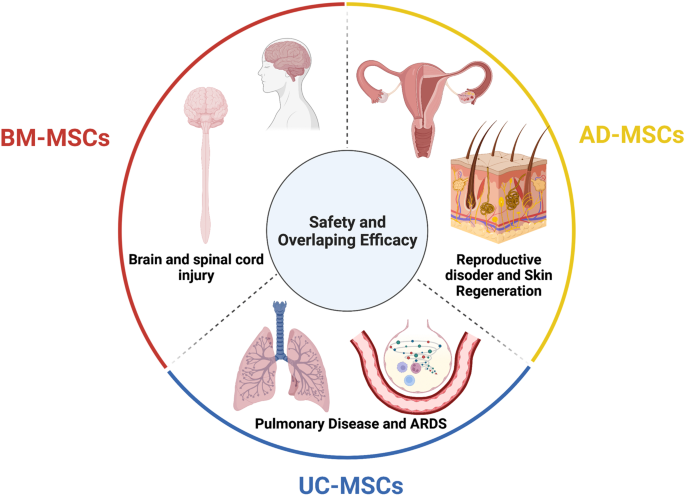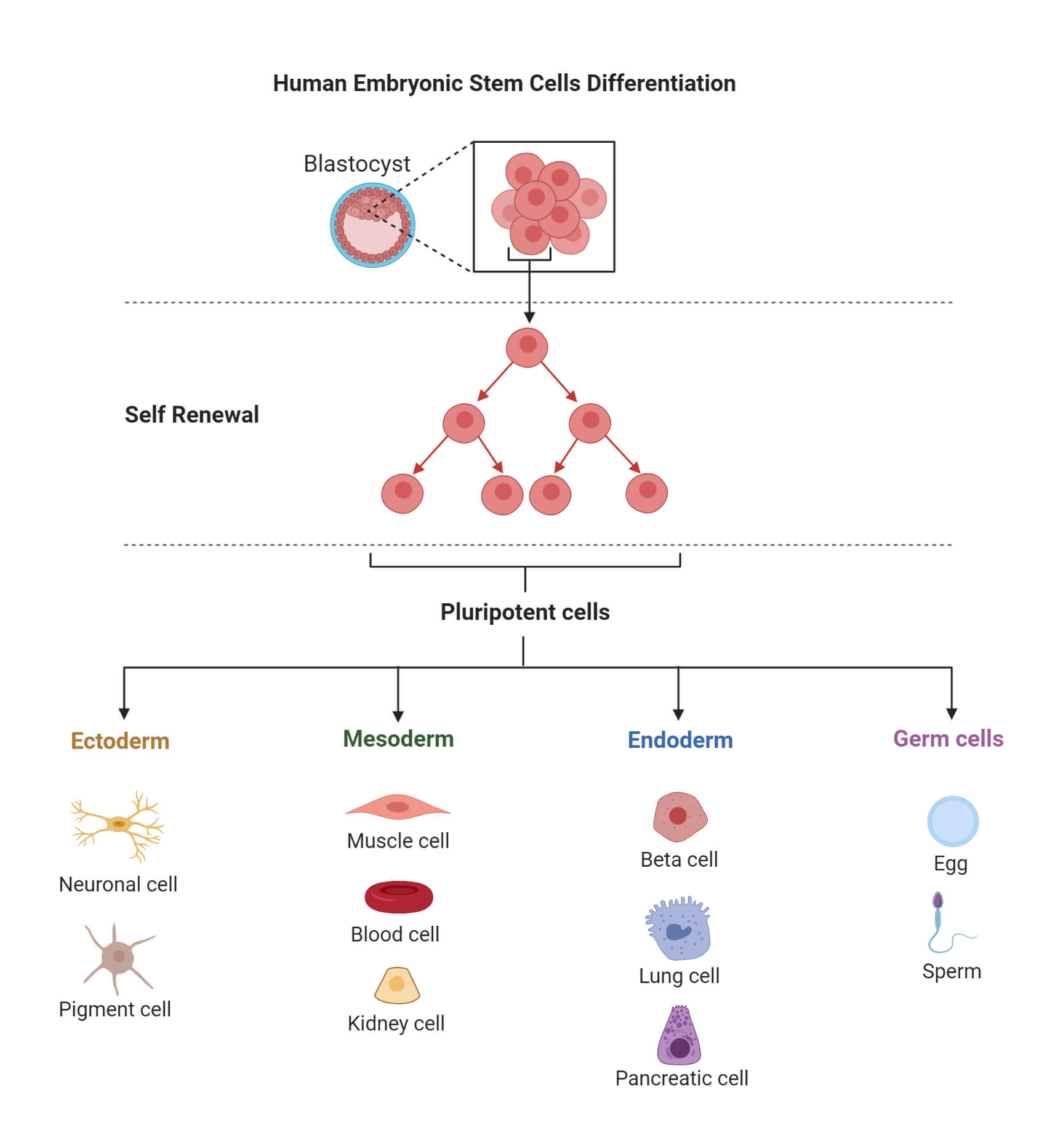Table of Contents

[/image][=video]
[/video]
By harnessing the regenerative possibility of stem cells or other regenerative cells, clinicians can promote the development of new skin cells, improve blood vessel development, and boost the regrowth of harmed muscle mass or bone tissue. This has significant implications for the treatment of persistent wounds, burns, and traumatic injuries, possibly decreasing healing time and improving individual outcomes. Nevertheless, cell regrowth treatment offers a novel approach to take care of and possibly turn around the progression of these conditions.
By targeting the underlying reasons for degeneration, such as cartilage damage or intervertebral disc degeneration, regenerative therapies aim to recover the integrity and function of damaged cells, relieving pain and improving movement.
While significant development has actually been made in developing alternative sources of stem cells, such as induced pluripotent stem cells, honest concerns still surround the area. Stabilizing the potential benefits of cell regeneration therapy with ethical factors to consider and ensuring liable research study practices proceed to present challenges for scientists and policymakers. Regardless of considerable progression, there are still technological constraints to overcome in cell regeneration therapy.
The precise control and manipulation of cell behavior and differentiation are also areas that need more improvement. Resolving these technological constraints is important to progressing the area and allowing more patients to take advantage of cell regrowth therapy. Governing paths and authorization procedures for cell regeneration therapy existing significant challenges. The fast-paced nature of clinical advancements commonly surpasses the governing frameworks, developing a need for versatility and effectiveness in reviewing and approving brand-new treatments.
Stem Cell Therapy local to Allen Park

The prospective applications of cell regrowth therapy are substantial and varied. In the future, we might see regenerative therapies becoming common treatments for a large range of conditions, including neurological disorders, cardio diseases, and musculoskeletal injuries. Research study right into tissue and organ regeneration might cause the development of functional substitutes for damaged organs, reducing the demand for transplantation.
The prevalent adoption of cell regrowth therapy can have an extensive effect on health care systems worldwide. By offering even more effective and targeted therapies, cell regeneration treatment has the potential to decrease medical care expenses associated with persistent problems and lasting care. Much shorter recovery times, enhanced outcomes, and fewer problems can result in considerable renovations in patient high quality of life.
Researchers have lengthy attempted to recognize the body's recovery processes and use them in the therapy of injury and degeneration. Component of the body's flexible reactions to injury originates from mobile elements and factorssuch as platelets and particular sorts of cellsand materials made by or consisted of within them. The effects applied by these mobile variables assist in cells remediation and regeneration in a healthy and balanced body.
Help create an atmosphere for tissue healing, with modulating swelling and stimulating neighborhood cells and bioactive proteins. The objective of biologic therapy is to enhance the healing and local setting of injured tissues be it muscles, tendons, tendons, cartilage, joints, fascial, or nerves. It is additionally presently being used to attend to the pain and inflammation that come with degenerative conditions, such as joint inflammation.
While substantial progress has actually been made in developing different sources of stem cells, such as generated pluripotent stem cells, ethical concerns still border the area. Balancing the possible advantages of cell regrowth treatment with ethical considerations and ensuring liable research techniques proceed to position difficulties for researchers and policymakers. Despite significant development, there are still technological constraints to overcome in cell regeneration therapy.
Hormone Therapy servicing Allen Park
Addressing these technological limitations is critical to progressing the field and permitting more patients to profit from cell regrowth treatment. Regulatory paths and authorization procedures for cell regeneration therapy existing considerable obstacles.
The possible applications of cell regrowth treatment are huge and diverse. In the future, we might see regenerative treatments coming to be usual treatments for a wide variety of problems, including neurological disorders, cardio illness, and bone and joint injuries. Research into cells and organ regeneration may bring about the growth of functional replacements for damaged organs, decreasing the need for hair transplant.
The extensive adoption of cell regrowth treatment might have a profound effect on health care systems worldwide. By using more reliable and targeted therapies, cell regeneration treatment has the potential to decrease healthcare expenses linked with persistent conditions and lasting care. Much shorter recovery times, boosted outcomes, and fewer issues could cause significant improvements in patient lifestyle.
Medical Group around Allen Park, Michigan
Scientists have lengthy attempted to recognize the body's healing processes and utilize them in the treatment of injury and degeneration. Component of the body's adaptive reactions to injury originates from mobile elements and factorssuch as platelets and particular kinds of cellsand compounds made by or included within them. The results applied by these cellular aspects aid in cells reconstruction and regrowth in a healthy body.
Aid produce a setting for cells recovery, through modulating inflammation and promoting local cells and bioactive proteins. The purpose of biologic treatment is to improve the recovery and neighborhood setting of injured cells be it muscles, ligaments, tendons, cartilage, joints, fascial, or nerves. It is likewise presently being made use of to address the pain and swelling that accompany degenerative problems, such as arthritis.
While considerable development has been made in establishing different resources of stem cells, such as generated pluripotent stem cells, honest problems still surround the area. Stabilizing the prospective benefits of cell regrowth treatment with ethical considerations and ensuring liable research practices remain to posture difficulties for researchers and policymakers. Despite substantial progress, there are still technological limitations to get over in cell regrowth therapy.
The accurate control and control of cell actions and differentiation are also areas that need more improvement. Resolving these technical restrictions is vital to progressing the area and permitting more people to gain from cell regeneration therapy. Regulatory paths and approval procedures for cell regeneration treatment present significant difficulties. The busy nature of clinical developments typically outmatches the governing frameworks, developing a requirement for flexibility and performance in reviewing and approving brand-new therapies.
The potential applications of cell regeneration treatment are huge and varied. In the future, we may see regenerative therapies becoming typical treatments for a variety of conditions, consisting of neurological disorders, heart diseases, and bone and joint injuries. Study into tissue and body organ regeneration might cause the growth of practical substitutes for harmed organs, lowering the need for transplantation.
Regenerative Therapy
The prevalent adoption of cell regeneration treatment could have an extensive influence on medical care systems worldwide. By offering more efficient and targeted treatments, cell regrowth therapy has the potential to decrease medical care costs connected with chronic conditions and long-term treatment. Much shorter recovery times, boosted outcomes, and fewer problems can bring about substantial renovations in patient lifestyle.

Researchers have lengthy attempted to understand the body's healing procedures and use them in the therapy of injury and degeneration. Component of the body's adaptive responses to injury originates from cellular elements and factorssuch as platelets and specific sorts of cellsand compounds made by or consisted of within them. The effects put in by these cellular elements aid in cells restoration and regrowth in a healthy body.
Aid produce an atmosphere for cells recovery, with modulating swelling and stimulating local cells and bioactive healthy proteins. The purpose of biologic treatment is to enhance the healing and regional setting of hurt tissues be it muscle mass, tendons, tendons, cartilage, joints, fascial, or nerves. It is additionally currently being utilized to address the discomfort and swelling that accompany degenerative problems, such as arthritis.
Navigation
Latest Posts
Menopause Treatment
Stem Cell Therapy
Perimenopause Treatment servicing Allen Park